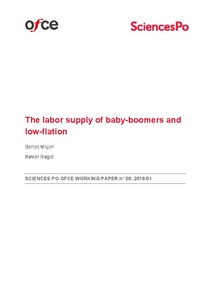The labor supply of baby-boomers and low-flation

Observatoire français des conjonctures économiques
OFCE - Paris
2018
17 p.
wages ; labour supply ; ageing ; older worker
Working Paper
09
Wages and wage payment systems
http://www.ofce.sciences-po.fr/
English
Bibliogr.;Statistics
"Why is wage inflation so weak in spite of the recent sharp reduction in unemployment? We show that this may be due to an ongoing major positive labor supply shock. Indeed, the participation rate of workers aged between 55 and 64 has increased steadily over the last decade, from a third to above a half on average across OECD countries. This is most likely the consequence of aging and the reform of pensions. We show that the participation rate of workers aged 55 to 64 contributes to explain why wage inflation has remained weak over the last five years. For instance, it accounts for as much as -1% of wage inflation per annum in Germany since 2013. Our second result is that Phillips curves are alive and well. Wage inflation remains highly responsive to domestic unemployment rates, including after the Great Recession."
Digital
The ETUI is co-funded by the European Union. Views and opinions expressed are however those of the author(s) only and do not necessarily reflect those of the European Union or the ETUI.